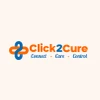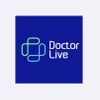Top 10 Remote Patient Monitoring Devices to Stay Safe During COVID-19 at Home

The healthcare system in most countries is overburdened. The pressure on healthcare personnel and infrastructure has grown manifold during the Covid-19 pandemic. WHO’s prescribed norm of doctor to patient ratio is 1:1000. Yet, several countries, including India, fall far below this norm.
Not only patients with Covid-19 are struggling to get proper facilities, but even people who are suffering (or at high risk) from other diseases like diabetes, Alzheimer’s, cardiovascular diseases, and more are having a hard time. Remote health monitoring can help mitigate some of these issues by assisting people in staying safe at home.
What is Remote Patient Monitoring?
Remote patient monitoring refers to monitoring the health of an individual outside of a conventional hospital or healthcare setting. Remote health monitoring can be done at home or any other place where medical care may not be physically accessible.
Various technologies available in the modern world make remote patient monitoring possible. Individuals can use different tools and systems to monitor their health parameters whenever they wish and electronically transfer to their doctor for a recommendation. Parameters that can be monitored include vital signs, blood pressure, blood oxygen, weight, heart rate, and many more.
Based on remote health monitoring data, medical professionals in their primary care centres, nursing facilities, hospitals or off-site centres can make changes in the existing treatment or suggest a hospital visit.
If not required, remote patient monitoring stats reassure the patient and the doctor that the current treatment is effective.
Why is Remote Patient Monitoring Important?
With remote patient monitoring, patients can observe and report their current parameters, enabling medical professionals to analyze acute and chronic health conditions in real-time, regardless of where they are. In addition, ageing populations and pregnant ladies can monitor their parameters from home and avoid travelling in a high-risk situation.
Patients do not have to go to the hospital or clinic every time for a checkup, thereby saving time and reducing cost. Remote patient monitoring is also critical after a patient has been discharged, as it helps monitor their healing and recovery. There are lower readmission rates in ERs and healthcare facilities, as only those with severe conditions or emergency come in.
The medical staff can handle and manage situations more efficiently. It reduces their burden and can provide non-contact care, which is crucial during the Covid-19 pandemic. In addition, real-time updates of an individual’s health can improve the diagnosis and ensure holistic care.
Moreover, with self-monitoring of health, patients understand their condition and treatments better, which empowers them. As a result, most of the patients in this scenario can recover from their home itself, which improves their quality of life.
Benefits of Remote Health Monitoring System
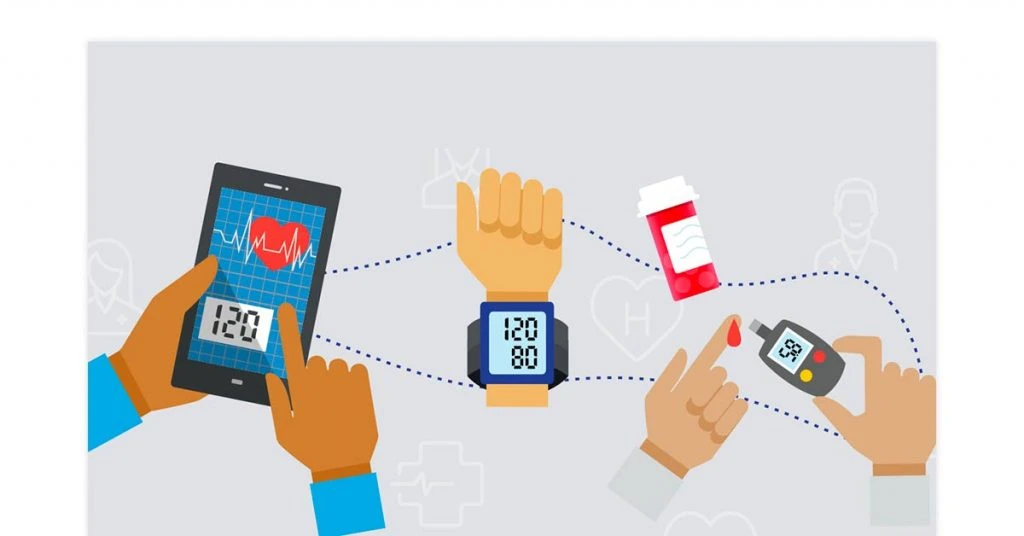
Some of the major benefits of remote health monitoring system includes:
- Peace of mind
Patients and their loved ones have the assurance that their health and well-being are paid attention to daily. At a time like that in the Covid-19 pandemic, knowing that you are healthy from your home via remote monitoring is a safer option to going out. The home environment is more conducive to mental well-being as well.
- Better access to healthcare
People living in remote and other areas that do not have access to proper health facilities are at higher risk of not getting treatment on time. Remote monitoring enables patients to get recommendations from any doctor present anywhere.
- Contactless healthcare service
Medical professionals are overburdened and at high risk of getting infected with Covid-19 while treating an infected patient in person. In remote patient monitoring, the patient can attach the device, and readings will be informed to the doctor through virtual sessions. This way, doctors can also attend to more patients.
- Better decision making
Remote patient monitoring is generally done with tools that transfer the records to software. The doctors can use history and data analytics to provide personalized recommendations to their patients. Many tools are AI-powered, meaning that the software will assist health workers in making the best decisions.
- Patient empowerment
Patients are more educated about their conditions and realize what affects them negatively by noticing parameter readings. As a result, they can adjust their lifestyle better and improve their quality of life.
How Does Remote Patient Monitoring Systems Work?
For remote patient monitoring, patients need to have the necessary tools and devices to monitor their vital signs and other parameters in the absence of a medical worker.
The choice of remote patient monitoring tools and systems will depend on the ailment that needs to be monitored. For example, an oximeter can be used for checking oxygen saturation in blood for a Covid-19 patient.
Once the readings are obtained by following the necessary instructions and connecting the instrument to the patient’s body, they can be shared with healthcare workers. The doctor will decide the necessary course of action depending on the situation.
What Are Remote Patient Monitoring Devices?
Remote patient monitoring devices are non-invasive instruments that can capture values of various health parameters via sensors. These devices are attached to the patient’s body and can gather information at any time throughout the day.
The information can be processed, stored, transmitted, and shared with healthcare professionals.
Suggested Read: Telehealth Services: 10 Best Telemedicine Software with Features & Applications
Why Use Remote Patient Monitoring Devices?
Remote patient monitoring devices include glucose monitors, skin patches, wearable heart monitors, maternity care trackers, and so on. In case there is an emergency, alerts can be sent to family members and healthcare providers.
Top 10 Remote Patient Monitoring Systems
- BioVitals
- Aura
- Heart-Mate BP Monitor
- BPL Smart Oxy Finger Tip Pulse Oximeter
- Eko Platform
- Babyscripts
- Dozee
- AirView
- Coviu
- Glooko
People are becoming more health-conscious and are increasingly adopting remote patient monitoring systems. To choose a remote patient monitoring system that addresses unique challenges faced by a patient or healthcare provider, it is important to know their capabilities.
Some of the best remote patient monitoring systems are discussed next.
BioVitals
Best For: Remote health monitoring system for congestive heart failure and other symptoms (Cardiology, Respiratory, Oncology, Pain)
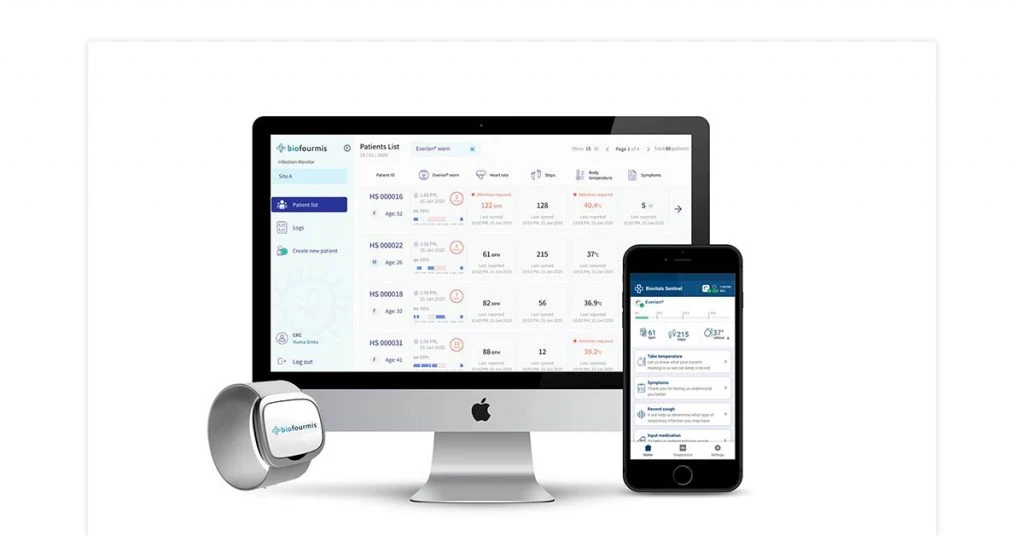
BioVitals By Biofourmis is a modular solution that enables remote monitoring of physiological signs of patients with complex chronic and acute conditions.
This is done by using a wearable medical-grade biosensor and additional devices depending on the use case. As a result, any symptoms can be detected early on, and guidelines can be shared to use generic drugs.
The health information of any patient is compared with specific population-level data to help detect and predict medical issues. Algorithms can assist in optimizing treatment and dosage. This can help prevent serious emergencies.
BioVitals remote patient monitoring app provides the patient’s health condition data, enables self-reporting of symptoms, and promotes program adherence.
BioVitals Features:
- Wearable biosensors for continuous monitoring of physiological parameters
- 25+ peripherals for different illnesses
- FDA cleared AI-driven predictive analytics for disease detection
- Video calling for healthcare providers and care teams
- Integration with hospital EMR
- Dashboard for a patient overview
- Scheduled evaluation questionnaires
- Payment by CMS
- Compliance with data security and data security
- App for symptom monitoring and management, personalized feedback
Aura
Best For: Detecting the risk of respiratory infection (H1N1, Rhinovirus, and SARS-Cov2)

Aura by Empatica is a wearable AI system that can detect respiratory infections. It integrates with the remote health monitoring platform Empatica Care, which can monitor the vital health signs of patients in real-time.
Daily risk assessments are done based on sensor data on the app and dashboard. Users have to wear E4/ EmbracePlus. Alerts are sent to individuals at the earliest physiological signs of a potential infection.
This can help in providing early critical care and reducing the spread of respiratory infections to others. In case of Covid-related symptoms, the user can self-isolate and get tested. It can also track their recovery status.
Empatica Features:
- Integration with remote monitoring platform
- Custom-made photoplethysmography and electrodermal activity sensors
- Automatic alerts
- HIPAA and GDPR-compliant
- Online dashboard
- User app
- CE marking
Related Categories: Healthcare Software | Telemedicine Software | Hospital Billing Software | Pharmacy Software
Heart-Mate BP Monitor
Best For: Trend comparison through the record of blood pressure readings

The heart-mate blood pressure monitor (110 x 52 x 118 mm) by HealthSense uses pressure sensors and oscillometric technology to monitor blood pressure and get accurate and reliable readings. More than a hundred entries of two users can be stored at a time in the device.
After nearly 15 minutes of inactivity, the air tube is plugged into the USB port. The cuff is wrapped a few centimetres above the elbow in line with the heart for any regular or large-sized left arm.
Once both the arm and device are placed on a flat surface, the start button is pressed. As the blood pressure value varies during the day, the average reading is considered the most accurate.
HeartSense Heart-Mate Features:
- Oscillometric Method
- Irregular heartbeat alert
- Large LCD Display (40 x 60mm)
- Wide arm cuff (22 – 42cm)
- 2 user memory
- Error indicator
- Systolic, Diastolic, pulse, date, time display
- Average reading calculator
- Body movement indicator
- Skidproof with Silicone feet
- WHO compliant indicator
- Low battery indicator
BPL Smart Oxy Finger Tip Pulse Oximeter
Best For: Oxygen concentration measurement and pulse rate
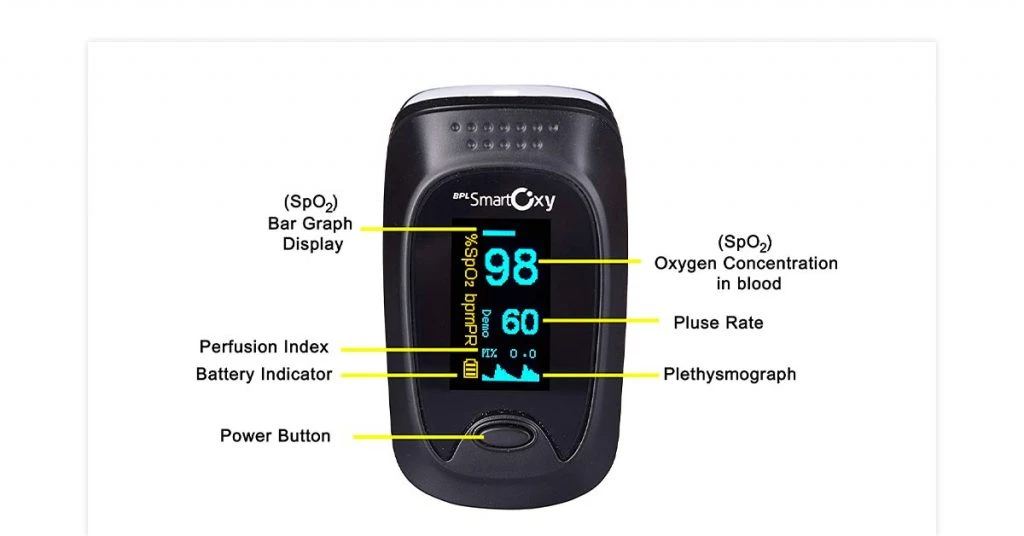
BPL Smart Oximeter (3.6 x 6.3 x 3.4 cm) is a small and portable SPO2 (blood oxygen saturation) monitor that children and adults can use. It is useful for people with COPD, asthma, heart conditions, and Covid-19.
It has six display modes and a four-directional display. The oximeter can measure blood oxygen levels, pulse rate, and perfusion index (PI) graph for consistent circulation check.
The readings (with a minimum deviation of +/-2%) indicate the current state in real-time and can detect any changes in the oxygen level and heart’s pumping function. Alerts are sent in case of both high and low measurement readings.
BPL Smart Oximeter Features:
- Light and compact
- Works with a wide range of finger sizes
- Four directional colours OLED display
- Measures SPO2, Pulse Rate
- Perfusion index graph
- Visual and audible alarm indication alerts
- Automatic power off
- Up to 20 continuous hours of battery life
Eko Platform
Best For: AI-powered cardiopulmonary screening for detection of congestive heart failure and other complications

Eko is a screening and telemedicine solution that can detect early signs of cardiopulmonary disease and give care recommendations with AI-powered analysis and collaboration tools.
Medical professionals can listen to an electrocardiogram (ECG) and heart sounds and remotely monitor cardiac function. The live video stream ensures high-quality audio and video for clarity.
The information can be transmitted to specialists across clinics and departments if required.
Eko Features:
- Remote wireless screening
- Up to 60x sound amplification
- Active noise cancellation
- Easy monitoring and access to patient data
- Centralized dashboard
- Share recordings securely for referrals and second opinion
- Real-time analysis with rigorously trained FDA-cleared AI
- Easy to implement and scale
- Mobile app
Babyscripts
Best For: Diabetes remote health monitoring system for expecting mothers

Babyscripts is remote monitoring and virtual management solution that helps pregnant women and new mothers anywhere through intelligent risk triggers.
For example, remote monitoring is done for blood pressure, weight, mental health, social determinants of health (SDOH), gestational diabetes level, etc.
This helps health workers obtain real-time data so that they can take necessary and timely actions whenever required. It also provides maternal education during the first year of the postpartum period.
The content includes gestation and guidelines from ACOG/CDC/NIH. In addition, there are clinical and non-clinical campaigns as well as satisfaction surveys.
Babyscripts Features:
- Exception monitoring
- Gestation-specific education
- Schedule optimization
- Unique workflows depending on patient’s clinical and social risk
- EMR-integrated standard and advanced workflows
- Scheduling and reallocation of appointments
- Support for English and Spanish language
Dozee
Best For: Early warning related to step down HDU & ICU units with 98.4% accuracy

Dozee is a recent but highly accurate contactless and continuous remote patient monitoring solution that can track a patient’s vital trends using AI algorithms.
Parameters that can be monitored with Dozee include DEWS Score, heart rate, respiration rate, oxygen saturation, heart rate variability, stress and recovery, blood pressure, sleep stages, sleep apnea, snoring index, cardiac performance matrix, and restlessness.
The sensor sheet can be placed under the mattress and connected to the Internet for continuous vitals’ readings. Early warning score enables the detection of health issues so that timely precautions can be taken and ICU bed utilization can be optimized. It can be used both at home and in hospitals.
Dozee Features:
- Contactless monitoring
- Easy to use
- Customizable AI-powered alerts
- Continuous monitoring of vitals
- Health Trends
- Integration with HIMS with API & SDK
- Zero Maintenance
- Central patient monitoring platform
- Mobile app and web alerts
AirView
Best For: Management of remotely obtained patient data

AirView by ResMed is a secure cloud-hosted system for simplifying remote patient management, reporting, and troubleshooting issues. It allows health workers to focus more on patient care instead of administrative work.
The platform wirelessly connects to Resmed’s sleep and ventilation devices to manage different patients and provide them treatment remotely.
If a patient has no wireless module or a healthcare worker requires data reports in detail, they can download SD cards.
AirView Features:
- Wireless connectivity
- User-friendly interface
- Remote assist
- Multi-program analyses
- Retrieve recent clinical data on demand
- Alarms clinical metric to view different events
- Compliance data
- Easy reporting
- View clinical data on a single screen
- Management by exception
- Automatically filter your patient population into actionable groups
- Support for English, French, German, French, Canadian, Spanish, Portuguese, Japanese, Swedish, Italian
Coviu
Best For: Telehealth solution for secure video consultations
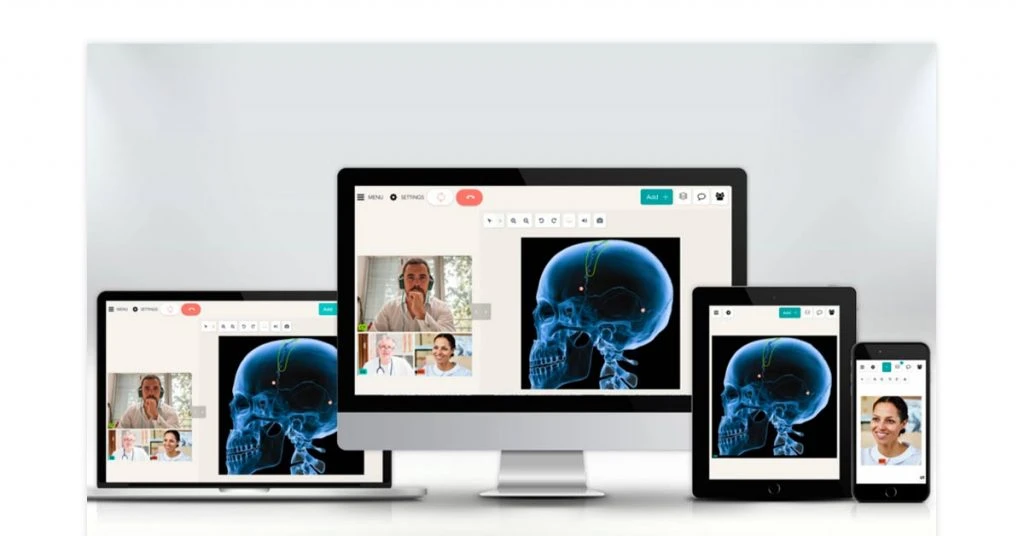
Coviu is a video-based telehealth solution that enables secure video consultations anytime and anywhere. The patients can simply click a link to get connected to their healthcare provider for a private virtual session.
It also provides customizable solutions for centralized management and virtual workflows. In addition, there are live waiting areas and tasks are notified via SMS, email, and browser messages.
Features:
- High-quality video calling
- Appointment scheduling
- No downloads, installations, or account creation
- Medical billing with multiple payment options
- In-built clinical tools
- Multi-provider practice
- Up-to-date encryption and security standards
- One-to-one messaging
- Remote treatment plans
- HIPAA compliance, privacy of patient data
Glooko
Best For: Managing diabetes patients

Glooko is a remote patient monitoring application for patients suffering from diabetes. The device can monitor blood glucose data and the effect of carb intake, medications and exercise on blood glucose levels.
In addition, healthcare providers can track, manage and engage with the patients.
Features of Glooko:
- Data sync from compatible blood glucose meters, insulin pumps, continuous glucose monitors, and fitness trackers
- Calendar view
- Pie charts for Insulin data
- Glucose trends comparison
- Reminders for checks and medications
- Customization of flags for high-risk patients
- FDA-cleared
- Mobile App
Conclusion
Remote patient monitoring is indispensable in the future of healthcare. It saves and optimizes time, energy and resources that are a big issue in the sector.
As a result, people can stay at their home and not worry about their health. For doctors, it can help in making crucial decisions on time and save lives. As time progresses, these devices will become more common.
Ayushee is currently pursuing MBA Business Analytics from SCMHRD, Pune with a strong background in Electronics and Communication Engineering from IGDTUW. She has 2 plus years of full-time work experience as an SEO content writer and a Technology Journalist with a keen interest the amalgamation of business and... Read more















